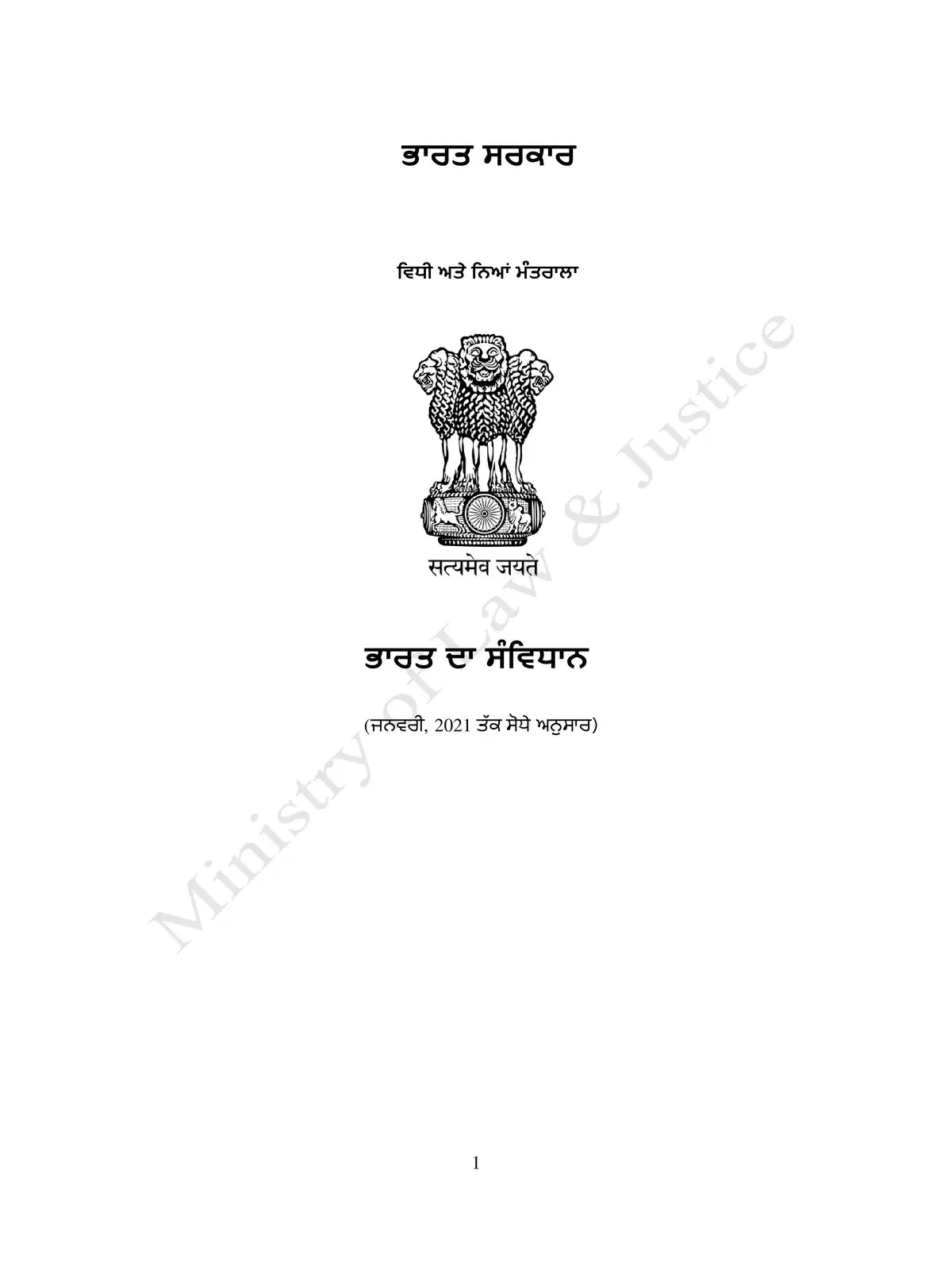
The Constitution of India
ਭਾਰਤ ਦੀ ਸੰਵਿਧਾਨ ਦੇਸ਼ ਦਾ ਅੱਧੀਨ ਕਾਨੂੰਨ ਹੈ। ਇਸ ਨੂੰ ਭਾਰਤੀ ਸੰਸਦ ਦੀ ਕਾਨੂੰਨ ਬਣਾਈ ਗਈ ਸੰਸਦ ਦੀ ਮਨਜੂਰੀ ਨਾਲ 26 ਨਵੰਬਰ 1949 ਨੂੰ ਮਨਜ਼ੂਰੀ ਮਿਲੀ ਸੀ ਅਤੇ 26 ਜਨਵਰੀ 1950 ਨੂੰ ਅੰਮਲ ਲਾਇਆ ਗਿਆ ਸੀ। ਇਹ ਸੰਵਿਧਾਨ ਸੀਆਸਤੀ ਸਿੱਦਾਂਤਾਂ ਨੂੰ ਨਿਰਧਾਰਤ ਕਰਦਾ ਹੈ, ਸਰਕਾਰੀ ਸੰਸਥਾਵਾਂ ਦੀ ਸਟ੍ਰੂਕਚਰ ਨੂੰ ਸਥਾਪਿਤ ਕਰਦਾ ਹੈ, ਪ੍ਰਕ੍ਰਿਆਵਾਂ, ਸ਼ਕਤੀਆਂ ਅਤੇ ਕਰਤਵਾਂ ਦੀ ਵਰਤੋਂ ਨੂੰ ਦਰਸਾਉਂਦਾ ਹੈ, ਅਤੇ ਨਾਗਰਿਕ ਹੱਕਾਂ, ਨਿਰਦੇਸ਼ਕ ਸਿੱਧਾਂ ਅਤੇ ਨਾਗਰਿਕਾਂ ਦੀ ਜ਼ਿੰਮੇਵਾਰੀਆਂ ਨੂੰ ਦਰਸਾਉਂਦਾ ਹੈ।
The Constitution of India is an important document consisting of a preamble and several articles that cover various aspects of governance and individual rights. It provides for a federal system of government, with a clear division of powers between the central government and the states. The President of India is the head of state, while the Prime Minister is the head of government.
Constitution of India – List of All Articles and Parts
The Constitution of India (As on 1 April 2019) or Bhartiya Samvidhan is the supreme law of India. The document lays down the framework demarcating fundamental political code, structure, procedures, powers, and duties of government institutions and sets out fundamental rights, directive principles, and the duties of citizens.
It is the longest written constitution of any country on earth. B. R. Ambedkar, chairman of the drafting committee is widely considered to be its chief architect.
The Constitution of India is also in the following languages download in format
- English
- Hindi
- Sanskrit
- Marathi
- Bengali
- Tamil
- Telugu
- Malayalam
- Kannada
- Urdu
- Assamese
- Odia
- Gujarati
Download the Constitution of India in PDF format from the official website link given below or from the alternative link.